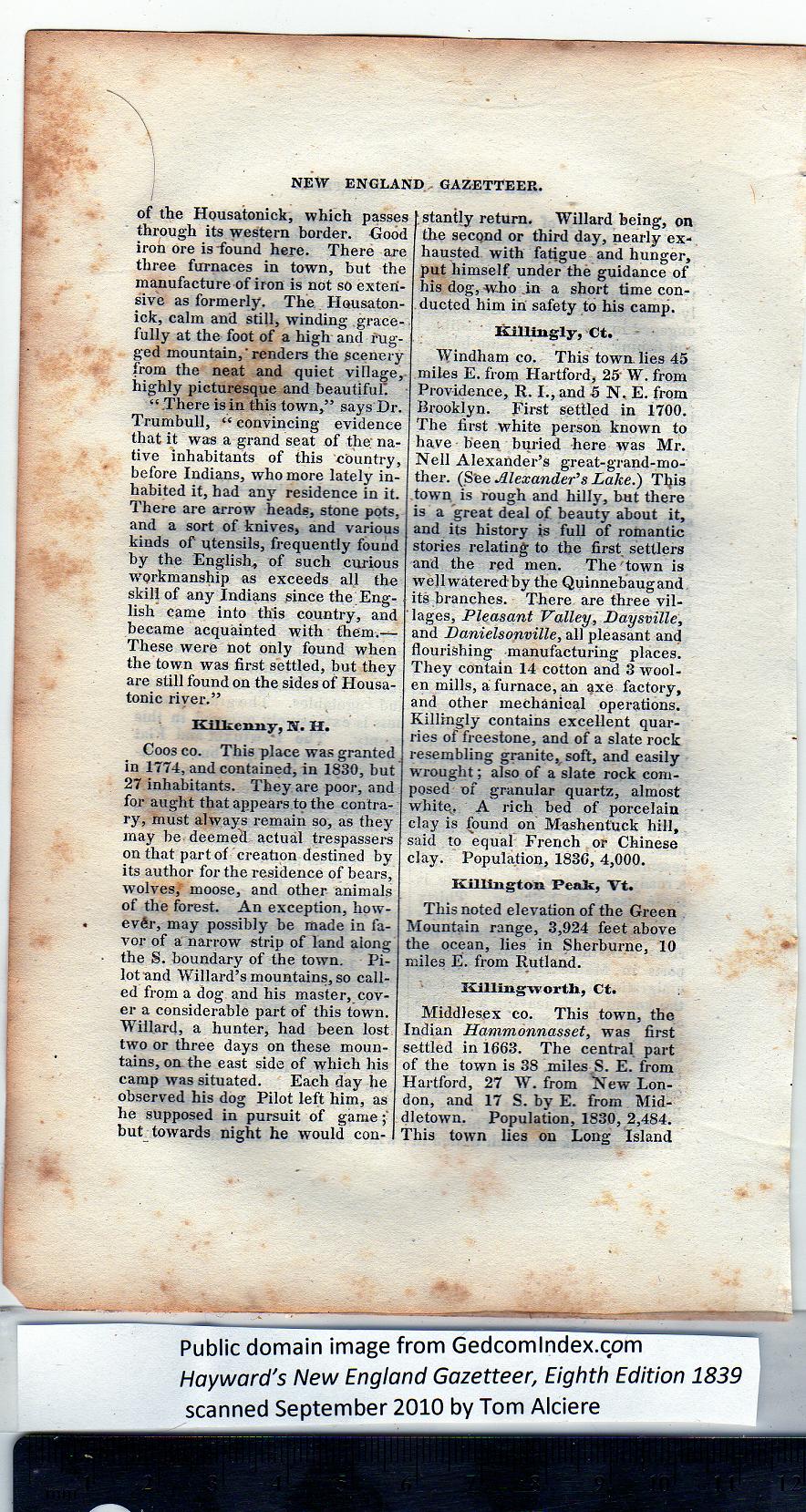|
of the Housatonick, which passes
through its western border. Good
iron ore is found here. There are
three furnaces in town, but the
manufacture of iron is not so exten-
sive as formerly. The Housaton-
ick, calm and still, winding grace-
fully at the foot of a high and rug-
ged mountain,'renders the scenery
from the neat and quiet village,
highly picturesque and beautiful".
“ There is in this town,” says Dr.
Trumbull, “ convincing evidence
that it was a grand seat of the; na-
tive inhabitants of this country,
before Indians, who more lately in-
habited it, had any residence in it.
There are arrow heads, stone pots,
and a sort of knives, and various
kinds of utensils, frequently found
by the English, of such curious
workmanship as exceeds all the
skill of any Indians since the Eng-
lish came into this country, and
became acquainted with them.—
These were not only found when
the town was first settled, but they
are still found on the sides of Housa-
tonic river.”
Kilkenny, N. H.
Coos co. This place was granted
in 1774, and contained, in 1830, but
27 inhabitants. They are poor, and
for aught that appears to the contra-
ry, must always remain so, as they
may he deemed actual trespassers
on that part of creation destined by
its author for the residence of bears,
wolves, moose, and other animals
of the forest. An exception, how-
ever, may possibly be made in fa-
vor of a narrow strip of land along
the S. boundary of the town. Pi-
lot and Willard’s mountains, so call-
ed from a dog and his master, cov-
er a considerable part of this town.
Willard, a hunter, had been lost
two or three days on these moun-
tains, on the east side of which his
camp was situated. Each day he
observed his dog Pilot left him, as
he supposed in pursuit of game
but towards night he would con-
stantly return. Willard being, on
the second or third day, nearly ex-
hausted with fatigue and hunger,
put himself under the guidance of
his dog, who .in a short time con-
ducted him in safety to his camp. |
Itillingly, Ct.
Windham co. This town, lies 45
miles E. from Hartford, 25 W. from
Providence, R. I., and -5 N. E. from
Brooklyn. First settled in 1700.
The first white person known to
have - been buried here was Mr.
Nell Alexander’s great-grand-mo-
ther. (See Alexander's Lake.) This
town is rough and hilly, but there
is a great deal of beauty about it,
and its history is full of romantic
stories relating to the first settlers
and the red men. The town is
wellwateredby the Quinnebaugand
its branches. There are three vil-
lages, Pleasant Valley, Daysville,
and Danielsonville, all pleasant and
flourishing -manufacturing places.
They contain 14 cotton and 3 wool-
en mills, a furnace, an axe factory,
and other mechanical operations.
Killingly contains excellent quar-
ries of freestone, and of a slate rock
resembling granite, soft, and easily
wrought; also of a slate rock com-
posed of granular quartz, almost
white, A rich bed of porcelain
clay is found on Mashentuck hill,
said to equal French or Chinese
clay. Population, 1830, 4,000.
Killington Peak, Vt.
This noted elevation of the Green
Mountain range, 3,924 feet above
the ocean, lies in Sherburne, 10
miles E. from Rutland.
Killing-worth, Ct.
Middlesex co. This town, the
Indian Hammonnasset, was first
settled in 1663. The central part
of the town is 38 miles S. E. from
Hartford, 27 W. from New Lon-
don, and 17 S. by E. from Mid-
dletown. Population, 1830, 2,484.
This town lies on Long Island |
